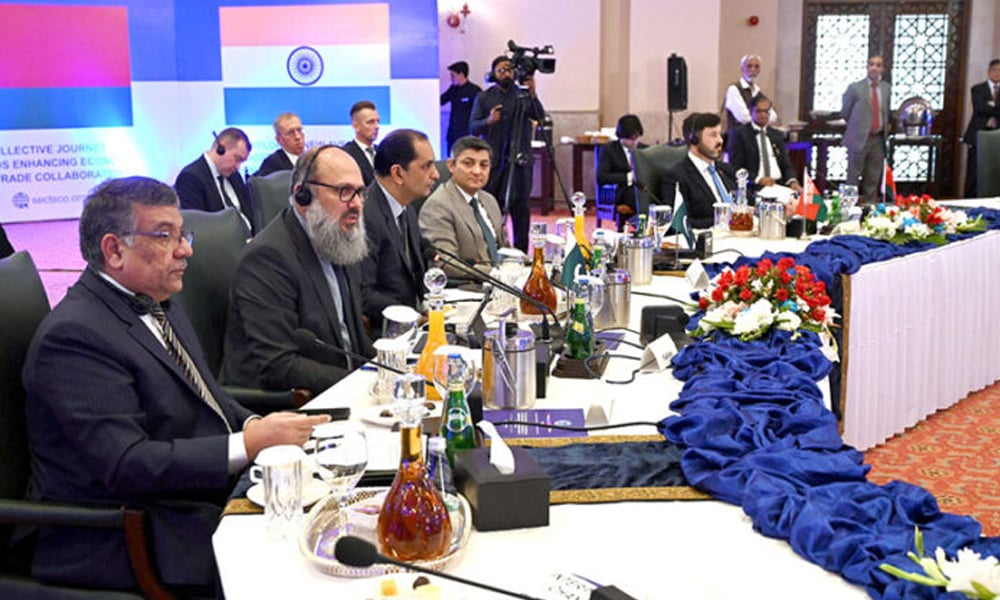PTBP Web Desk
The Government of Balochistan has entered into a significant $100 million financing agreement with the World Bank’s International Development Association (IDA) under the project titled “Getting Results: Access and Delivery of Quality Education Services in Balochistan.” This initiative aims to expand access to quality education and improve learning outcomes for students across the province, particularly in underserved and remote areas.
The agreement was signed between Bolormaa Amgaabazar, the World Bank’s Country Director for Pakistan, and Abdul Manan, Assistant Chief (Foreign Aid), Government of Balochistan. This collaboration marks a major milestone in strengthening educational infrastructure and improving school systems across one of Pakistan’s most resource-constrained regions.
Under the agreement, the project will emphasize expanding community schools, establishing public-private partnerships (PPP) for education delivery, and introducing scholarship programs to support students from low-income families. The initiative also includes a School Transportation Subsidy to help children—particularly girls—attend schools safely, even in remote districts where travel is often a barrier to education.
This project aligns closely with Balochistan’s Education Sector Plan, which prioritizes reducing the number of out-of-school children, enhancing teacher quality, and strengthening the province’s school infrastructure.
The Planning and Development Department (P&DD) of the Balochistan government will serve as the primary implementing agency, while the School Education Department (SED) will oversee the project through a dedicated Project Management Unit (PMU).
Within 60 days of the agreement taking effect, the PMU will be established to handle project execution, monitoring, and evaluation. It will also manage financial transparency, social and environmental safeguards, and adherence to the World Bank’s operational standards.
Additionally, a Project Steering Committee (PSC) will be formed within 90 days to provide strategic direction and ensure coordination among multiple agencies. This committee will include representatives from key government departments, local education authorities, and community stakeholders.
The agreement highlights a strong emphasis on transparency, accountability, and community involvement. Under the project, Community School Grants will be distributed to local education providers and community institutions. These grants will enable grassroots organizations to participate directly in improving education services.
At the same time, PPP School Grants will engage private sector partners to expand access to quality schooling. Each grant will be performance-based, linked to measurable outcomes such as enrollment rates, teacher attendance, and student learning levels. The School Education Department will rigorously monitor these benchmarks to ensure results-driven implementation.
Recognizing the financial and geographic challenges faced by families, the project includes a Scholarship Scheme for children from disadvantaged backgrounds. This initiative will provide targeted support to ensure that financial constraints do not prevent students from continuing their education.
Moreover, the School Transportation Subsidy will provide assistance to children living far from educational institutions, reducing dropout rates caused by accessibility issues. This subsidy aims to make school attendance consistent and safer, particularly for girls and children from remote areas.
The project will operate under the World Bank’s Environmental and Social Standards (ESS) to ensure sustainability and ethical conduct. The provincial government has been tasked with maintaining a grievance redressal mechanism, enforcing environmental compliance, and preventing any form of workplace harassment or exploitation.
An essential component of the agreement includes developing a Project Operations Manual within three months of the project’s commencement. This manual will define operational frameworks, procurement processes, and monitoring procedures to ensure the smooth and transparent execution of all project activities.
The initiative is designed with a 20-year operational horizon, reflecting the government’s long-term vision for sustainable educational development. The Government of Balochistan has committed to maintaining the institutional and financial arrangements required for the project’s ongoing success beyond the implementation period.
Officials from the Planning and Development Department described the project as a “transformative step” for Balochistan’s education system. “This project marks a major step toward transforming education delivery in Balochistan,” said a senior P&DD official. “It reflects our commitment to ensure that every child in the province, regardless of geography or gender, has access to quality education.”
The World Bank reaffirmed its commitment to supporting Pakistan’s broader education reform efforts, particularly in marginalized regions such as Balochistan. Through this collaboration, the World Bank aims to enhance equitable access to schooling and improve learning outcomes in alignment with Sustainable Development Goal 4 (Quality Education).
This initiative comes at a time when Balochistan faces persistent education challenges, including low literacy rates, inadequate infrastructure, and limited access to female education. According to various education reports, thousands of children—especially girls—remain out of school due to poverty, distance, and social constraints.
By integrating community participation, private partnerships, and direct student support mechanisms, the $100 million World Bank-Balochistan project seeks to address these deep-rooted issues systematically. The project’s outcomes are expected to strengthen school systems, promote inclusivity, and improve the overall learning environment for students across the province.
As part of Pakistan’s broader education reform agenda, this partnership showcases how coordinated global and local efforts can drive sustainable change in education. The project stands as a promising example of international cooperation advancing local development priorities.




